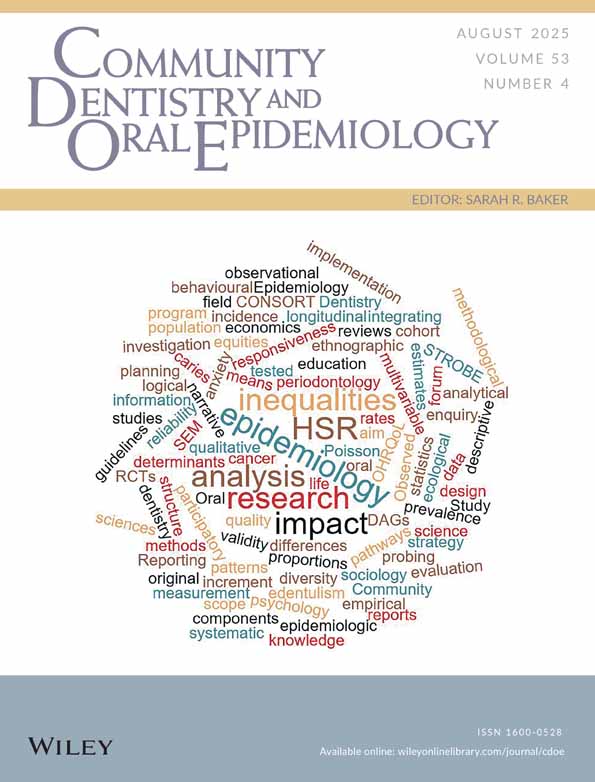Primary tooth fluorosis and fluoride intake during the first year of life
Abstract
Abstract –
Objectives: Few studies in North America have assessed dental fluorosis of the primary dentition and few, if any, anywhere have assessed the relative importance in fluorosis etiology of fluoride intake during different time periods or from multiple sources. The purpose of this paper is to report on analyses relating estimated prenatal fluoride intake and fluoride intake during different parts of the first year of life to primary tooth fluorosis.
Methods: As part of The Iowa Fluoride Study, subjects were recruited at birth and studied longitudinally. Trained examiners assessed dental fluorosis for children aged 4–7 years using the Tooth Surface Index of Fluorosis (TSIF) adapted for the primary dentition. Detailed parent questionnaires at childbirth were used to estimate prenatal fluoride intake and questionnaires sent at 6 weeks and 3, 6, 9, and 12 months were used to estimate fluoride intake during the first year of life (combined fluoride intake from water, food and beverage, supplements, and dentifrice). There were 504 children with prenatal and at least four of the five postnatal responses with complete data.
Results: Fluorosis prevalence was 12.1%, occurring primarily on the second primary molars. Receiver operating characteristic (ROC) curves and logistic regression were used to assess the importance of different time periods' fluoride intake. In bivariate analyses, fluoride intake during each time interval was individually significantly related to fluorosis occurrence. For multivariate analyses, the period from 6 to 9 months was most important individually (P = 0.0001), and no other period was jointly statistically significant.
Conclusions: Results suggest that the middle of the first year of life is most important in fluorosis etiology for the primary dentition in this setting.




